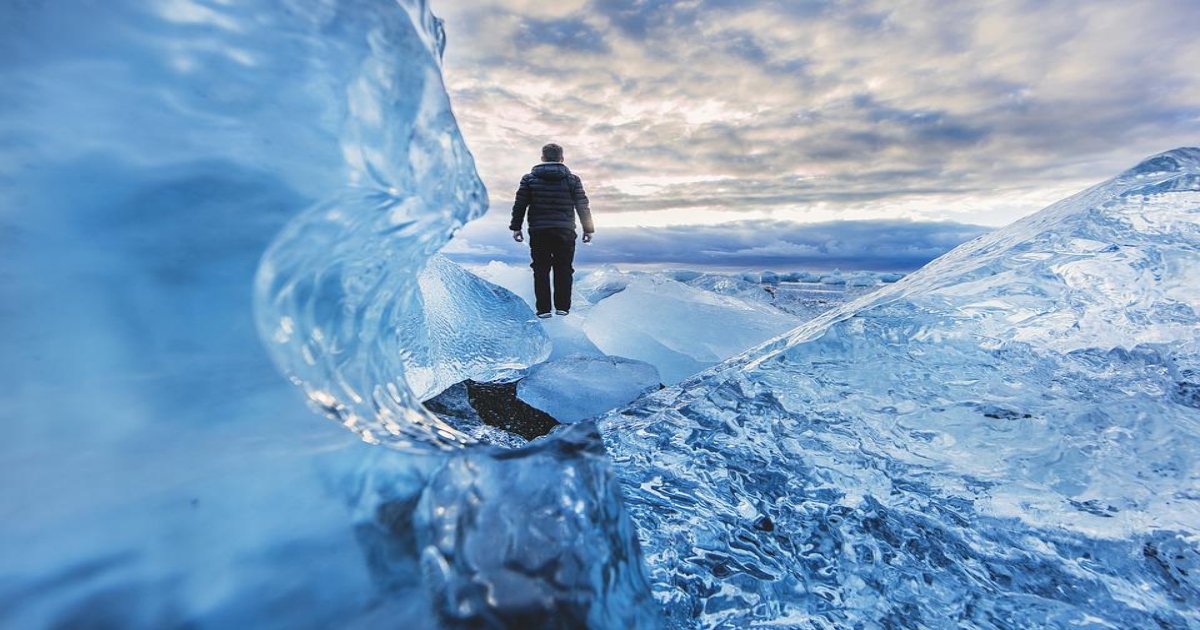The Manmade Glaciers and Other Ingenious Ideas of Sonam Wangchuk
An Indian engineer’s common sense, frugal innovation-centred solutions to big problems.
January 29, 2022

Sonam Wangchuk, an engineer and educator from the Himalayan region of Ladakh in northern India, is a maverick with an immense following. His speciality is taking problems that appear unsurmountable and solving them using a combination of basic science, common sense and frugal innovation.
Wangchuk lives surrounded by glaciers in the central Asian mountains, a world that is melting in front of his eyes, given the effects of Global Warming.
The problem
Wangchuk noticed that while water flowed from rivers in Ladakh in late winter, the farmers did not have water when they needed it most. This was when they planted their crops in the month of April.
He noticed that the snow melted quickly on vast exposed fields. However, cones of ice under bridges remained solid till much later. The cone shape had less surface area. And so, he decided to experiment with creating ice-cones on land near fields.
The ingenious solution
Wangchuk began with building a mound of amassed dried sea buckthorn bushes. Next, he piped-in water from higher ground. As water finds its level, the upturned pipe spouted the water. And as it fell on the bushes, it froze hard in the below zero temperature.
By adding layer upon layer of water, several massive ice structures were formed. In an artistic touch, he shaped them like the white stupas that are of religious significance to the Buddhists who live in the region.
In the springtime, when the fields were planted, the slow run-off provided water to the plants via especially dug channels. And the fields were given sustenance when they most needed it.
For agriculture in the area, these manmade glaciers have been a life saver. Wangchuk, ever self-deprecating, said his solution was based on the basic principles from fifth-grade textbooks.
The school for “failures”
In another successful initiative, Wangchuk noticed that far too many Ladakhi students were failing their high school exams. When he tutored them, he realized they were perfectly capable, but were being taught in English, a language that they did not understand well.
Moreover, the books had concepts such as trains and electric fans that were alien to them. The solution? He began teaching them by using their native language and by using examples from local contexts.
In time, Wangchuk opened a world-renowned school, SECMOL (Students’ Educational and Cultural Movement of Ladakh) where ‘failed’ students can enroll.
The three “H”s vs the three “R”s
The edifice of the school building is a solar energy garnering hive. Here, the “failures” thrive as they learn via alternative teaching methods.
In addition to instilling the three “R”s (reading, ‘riting and ‘rithmetic) Wangchuk emphasises a more wholistic combination of three “H”s- Head, Hand and Heart.
The head learns and stores a variety of concepts, the hands grow food, build and repair, while the heart develops the instinct to care for others.
The death of curiosity
I was fortunate to have sat next to Wangchuk on a flight to Ladakh. I took the opportunity to ask him what spurred him to become the person he is today.
“I was very lucky to have grown up in a tiny village in Ladakh, where there was no school,” he answered. I played in the Indus River, climbed trees, dug up soil and watched trees come out from apricot seeds.”
“All my learning was organic. I could go mingle with villagers on the farms, learn from various people and speak in my own mother tongue without being made to feel stupid about not knowing English.”
“Schools can be very damaging for children’s curiosity,” he continued. “A person’s software comes pre-loaded. If a human being is the hardware, curiosity is the learning software, which is broken down at school.”
Empathy
The other quality that Wangchuk reflected upon at length was empathy.
“Village women, like my mother, are so empathetic towards each other and people who pass-by,” he said. “They feed everyone and think of others before they think of themselves.”
The entire cabin tuned in as Wangchuk spoke, hanging on to every word. They were after all, familiar with a voice they had heard often in the media.
“When tourism started in Ladakh, in the mid-seventies, foreigners would come to my village, because we have several monasteries around us. At home, I’d see them almost quarrelling.
For the visitor wanted to pay money for our hospitality and my mother did not want to take any money,” he smiled.
A hero
As Leh, the capital city of Ladakh, approached, Wangchuk pointed out Nun and Kun, two of the tallest snow-clad peaks.
“As an engineer, I could have run away to Silicon Valley to solve rich people’s problems,” he said. “But if I can get through to the students who fail at school, solve the water and heat problems of my own people, then I’ve found all the riches I need.”
Wangchuk not only opens our eyes to our world’s urgent needs, but he also offers actual, workable solutions. If I call anyone my hero, it’s him.
Takeaways
Sonam Wangchuk, an engineer and educator from the mountains of northern India, is a maverick. He takes seemingly unsurmountable problems and solves them using a combination of basic science, common sense and frugal innovation.
His manmade glaciers, shaped to look like Buddhist stupas have helped save agriculture in Ladakh.
Wangchuk’s “school of failures” teaches students in their native language and by using examples from local contexts.
In addition to instilling the three “R”s (reading, ‘riting and ‘rithmetic), at his school Wangchuk emphasises a more wholistic combination of three “H”s- Head, Hand and Heart.

